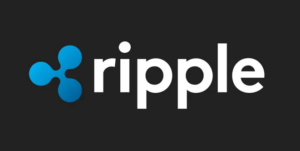The crypto world is buzzing with excitement about Avalanche (AVAX) and its potential to rival Ethereum as a major player in the blockchain space. The burning question on everyone’s mind is, “Does Avalanche AVAX have any chance of becoming a major Ethereum killer?” Let’s delve into this hot topic and shed some light on what’s happening in the world of digital assets.
First things first, Avalanche is a decentralized platform that aims to provide a faster, more scalable, and cost-effective alternative to existing blockchain networks like Ethereum. Its consensus protocol, known as Avalanche consensus, allows for high throughput and near-instant finality, making it an attractive option for developers and users alike. This technology sets Avalanche apart from other blockchains and positions it as a strong competitor to Ethereum.
One of the key factors contributing to Avalanche’s potential as an “Ethereum killer” is its ability to support smart contracts. Smart contracts are self-executing contracts with the terms of the agreement directly written into code. Ethereum popularized smart contracts, but its network has faced scalability issues, resulting in high fees and slow transaction times. Avalanche addresses these limitations with its advanced consensus mechanism, which enables it to process thousands of transactions per second with low fees.
Moreover, Avalanche boasts a growing ecosystem of decentralized applications (dApps) and protocols that leverage its unique features. From decentralized finance (DeFi) platforms to non-fungible token (NFT) marketplaces, developers are actively building on Avalanche to tap into its high performance and low latency. This thriving ecosystem signals a strong foundation for Avalanche to challenge Ethereum’s dominance in the decentralized application space.
In terms of market adoption, Avalanche has been gaining momentum since its launch, attracting investment and interest from both retail and institutional players. Its native token, AVAX, has seen significant price appreciation, reflecting growing confidence in the project’s technology and potential for long-term success. As more users and developers flock to the Avalanche network, the competition with Ethereum intensifies, setting the stage for an exciting showdown between the two platforms.
While Avalanche shows great promise as a potential Ethereum competitor, it’s essential to consider the challenges and risks that lie ahead. Ethereum has a well-established network effect, with a vast developer community and a wide range of decentralized applications already built on its platform. Transitioning users and projects from Ethereum to Avalanche may prove challenging, requiring strong incentives and support to overcome network effects and inertia.
In conclusion, Avalanche AVAX certainly has the potential to disrupt the status quo and emerge as a major player in the blockchain industry. Its innovative technology, growing ecosystem, and increasing market adoption position it as a formidable contender against Ethereum. However, the road to becoming an “Ethereum killer” is paved with obstacles that Avalanche must navigate with skill and strategy. As the crypto landscape continues to evolve, only time will tell whether Avalanche can realize its aspirations and carve out a significant market share in the competitive world of blockchain technology.


